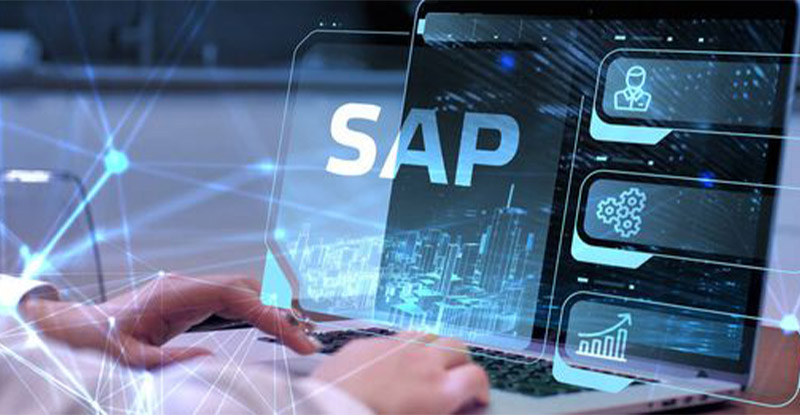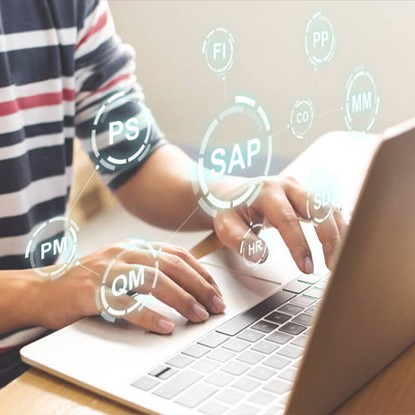SAP ERP Integration: Best Practices, Tools, Methods and Use Cases


Learn how to get the most out of your SAP ERP integration with third-party applications. We provide insights into the key aspects of SAP integrations, helping businesses understand the importance, challenges, and best practices associated with integrating SAP systems with other applications.
SAP, the powerhorse of enterprise resource planning (ERP), is at its best when connected to other applications and ecosystems. Effective integrations break down data silos, automate workflows, and drive operational efficiency. But where do you start? This guide explores best practices, tools, methods, and compelling use cases for SAP integrations.

Elevate your SAP ERP capabilities with Artsyl’s cutting-edge order data capture solution. Unleash seamless data exchange, automate sales order processes, and transform your business landscape. Dive into a new era of efficiency – integrate AI-powered Artsyl OrderAction with SAP now!
Imagine an SAP bursting with data, but isolated from the tools and processes that could truly unleash its power. That’s where third-party integrations come in, acting like magic bridges that connect your SAP to a vibrant ecosystem of possibilities.
With SAP integrations, businesses can automate workflows, eliminate manual tasks, and streamline operations across departments. Many companies choose to combine SAP data with external sources for powerful analytics and data-driven decision-making.
By connecting SAP with marketing, sales, and service platforms, businesses ensure seamless interactions and personalized experiences — and ultimately, innovative tools and technologies as your business evolves.
Forget limitations – let SAP become the central hub of a dynamic and responsive business ecosystem. Embrace third-party integrations and watch your potential soar!
RELATED: SAP Solutions: SAP S4/HANA
Supercharge SAP with InvoiceAction Magic!
Witness the magic of Artsyl InvoiceAction seamlessly integrated with SAP. Streamline invoicing workflows, enhance invoicing accuracy, and embark on a journey where efficiency meets innovation. Ready to supercharge your SAP experience? The power is in the integration – unlock it today!
Book a demo now
SAP, a leading enterprise software provider, integrates with a variety of third-party solutions to enhance its functionalities and provide a comprehensive business ecosystem. Popular third-party integrations with SAP include:
Integration with Microsoft Office allows users to seamlessly work with SAP data within familiar Office applications, enhancing productivity and collaboration.
Integration with Salesforce enables a unified view of customer data, enhancing customer relationship management (CRM) capabilities.
Workday integration provides a seamless link between SAP and human capital management (HCM) processes, facilitating HR and workforce management.
Integration with Concur streamlines travel and expense management processes, ensuring better control and visibility into business expenses.
As part of the SAP ecosystem, SuccessFactors integration enhances human resources functions, including talent management and workforce analytics.
Integration with AWS provides options for hosting SAP solutions in the cloud, offering scalability and flexibility.
Integration with Azure allows users to deploy and manage SAP applications in a cloud environment, enhancing agility and scalability.

Integration with Tableau enables powerful data visualization and analytics capabilities for SAP data, supporting informed decision-making.
Integration with ServiceNow enhances IT service management processes, fostering better communication and collaboration across the organization.
Informatica integration provides robust data integration and management capabilities, ensuring data quality and consistency within SAP environments.
Integration with OpenText enhances document and information management, facilitating efficient handling of content within SAP applications.
Integration with GCP offers additional cloud options for hosting SAP solutions, supporting organizations in their cloud strategies.
Adobe Sign integration enables digital signature capabilities within SAP applications, streamlining approval processes and document workflows.
Integration with Red Hat technologies supports the deployment and management of SAP solutions in a containerized environment.
Citrix integration allows for secure and efficient access to SAP applications and data, particularly in virtualized or remote working environments.
Breakthrough SAP Boundaries!
Break free from conventional limits with Artsyl’s game-changing intelligent process automation. Experience SAP ERP integration like never before – where manual processes vanish, and automation takes the lead. Ready for a breakthrough? Integrate docAlpha and redefine SAP efficiency!
Book a demo now
SAP, as a comprehensive enterprise software solution, provides various integration methods to connect with other systems and third-party applications. Popular SAP integration methods include:
SAP PI/PO is a middleware solution that facilitates the integration of different systems, including SAP and non-SAP applications. It enables message-based communication and supports various protocols.
SAP Data Services is a data integration and transformation tool that allows organizations to extract, transform, and load (ETL) data between different systems. It supports both batch and real-time data integration.
CPI is a cloud-based integration platform that connects cloud and on-premise applications. It offers pre-packaged integration content and supports various connectors for seamless integration across systems.
ALE is a distributed integration technology within the SAP ecosystem. It enables the exchange of business data between different SAP systems, supporting real-time communication and data distribution.
RELATED: The Complete Guide to SAP Enterprise Resource Planning (ERP)
RFC allows communication between SAP systems and external applications or systems. It enables the execution of remote function modules, allowing for the integration of business processes.
IDoc is a standard SAP document format for exchanging data between SAP systems and external systems. It serves as a structured format for data interchange and supports both synchronous and asynchronous communication.
HANA Smart Data Integration is part of the SAP HANA platform and allows for real-time data integration and transformation. It supports the replication of data from various sources into the SAP HANA database.
Fiori is SAP’s user experience (UX) design approach, but it also includes integration capabilities. Fiori apps can be integrated with other SAP and non-SAP applications to provide a unified and intuitive user interface.

SAP supports web services standards such as SOAP (Simple Object Access Protocol) and REST (Representational State Transfer) for communication between SAP systems and external applications. This facilitates interoperability and integration with various platforms.
OData is a standard protocol for building and consuming RESTful APIs. SAP supports OData as a way to expose and consume data from SAP systems, enabling seamless integration with other applications.
NetWeaver Gateway provides a way to create, expose, and consume OData services in SAP environments. It simplifies the integration of SAP applications with external systems and mobile applications.
SAP Integration Suite is an end-to-end integration solution that encompasses various integration capabilities, including process integration, data integration, and API management. It supports hybrid landscapes and integrates with both SAP and non-SAP systems.
These SAP integration methods cater to diverse requirements, allowing organizations to connect SAP systems with external applications, databases, and services, fostering a seamlessly connected and interoperable business environment. Other methods include:
The choice of integration method depends on factors such as the nature of integration, data volume, and architectural considerations.
Efficiency Redefined: ArtsylPay + SAP Integration
TRevolutionize your SAP ERP processes with ArtsylPay payment processing integration. Seamlessly connect Artsyl electronic fund transfer system for a payment efficiency boost that transcends expectations. It’s time to redefine how you pay and get paid – integrate ArtsylPay and experience a new era of business excellence!
Book a demo now
Integrating SAP systems with other applications requires careful planning and execution to ensure a seamless and efficient business process. Here are some best practices for SAP integration.
Conduct a thorough analysis of all systems involved in the integration, including SAP and external applications. Understand data structures, formats, and business logic to facilitate a smoother integration.
Implement data cleansing and validation processes to ensure the quality and consistency of data exchanged between systems. Address any data discrepancies or inconsistencies upfront.
RELATED: What is SAP Software Used For?
Adopt an API-first approach when possible. Design well-documented APIs to facilitate easy integration, making it simpler for external applications to consume SAP services.
Prioritize security during integration. Use secure communication protocols (HTTPS), implement proper authentication mechanisms, and adhere to security best practices to safeguard sensitive data.
Implement robust error handling mechanisms to capture and handle errors gracefully. Utilize logging features to record integration activities and monitor for any issues in real-time.
Conduct thorough testing before deploying integrations to production. Perform unit testing, integration testing, and end-to-end testing to identify and address any issues early in the process.
Assess the scalability and performance of the integration under different conditions. Ensure that the integration can handle varying data loads and that response times meet performance expectations.

Document the integration architecture, data mappings, APIs, and any custom developments. Comprehensive documentation aids in troubleshooting, maintenance, and future enhancements.
Implement change management processes to handle updates, upgrades, or changes in configurations. Ensure that changes are communicated, tested, and documented to prevent disruptions.
Stay connected with the SAP community and leverage support resources. Engaging with forums, attending conferences, and accessing support documentation can provide valuable insights and solutions.
By following these best practices, organizations can enhance the success of their SAP integrations, minimize potential challenges, and create a foundation for a flexible and future-proof integrated business environment.
Remember, successful SAP integrations are not just about technology; they require careful planning, strategic alignment, and ongoing maintenance. By following best practices, leveraging the right tools and methods, and exploring compelling use cases, you can transform your SAP investment into a powerful engine for business growth and innovation.
docAlpha + SAP: Your Formula for Success!
Witness the synergy of Artsyl docAlpha and SAP ERP. Your formula for success lies in seamless integration – where data flows effortlessly, and processes align for peak performance. Ready to unlock the potential? Synergize docAlpha and SAP today!
Book a demo now
SAP integration refers to the process of connecting SAP systems with other applications, platforms, or third-party solutions to enable seamless data exchange and business process collaboration. SAP integration is crucial as it allows businesses to streamline operations, enhance efficiency, and ensure a unified flow of data across various systems, improving decision-making and overall business agility.
Common challenges include data inconsistencies, differing data structures between systems, security concerns, ensuring real-time data updates, and managing the complexity of integrating with diverse applications.
SAP can be integrated with a wide range of third-party applications, including CRM systems, HR solutions, e-commerce platforms, supply chain management tools, and more, depending on business requirements.
SAP PI (Process Integration) or PO (Process Orchestration) is middleware that facilitates the integration of different systems, providing tools to map data between systems, route messages, and ensure seamless communication.
SAP Cloud Platform Integration (CPI) is designed for cloud integrations, connecting cloud-based SAP solutions with on-premise SAP systems or other cloud applications. It supports various protocols and offers pre-packaged integration content.
Yes, SAP is designed to integrate with non-SAP systems. Various integration tools and technologies, such as APIs, web services, and middleware, facilitate communication and data exchange between SAP and non-SAP applications.
APIs (Application Programming Interfaces) play a crucial role in SAP integrations by providing a standardized way for different systems to communicate. They enable the exchange of data and functionality between SAP and external applications.

Data security in SAP integrations can be ensured by using secure communication protocols (HTTPS), implementing proper authentication mechanisms, encrypting sensitive data, and adhering to security best practices.
The timeline for SAP integration projects varies based on the complexity of the integration, the number of systems involved, and the extent of customization required. Projects can take several weeks to months for completion.
Businesses should implement change management processes, thoroughly test updates or changes before deployment, communicate changes to relevant stakeholders, and maintain comprehensive documentation to ensure a smooth transition.
Real-world use cases include integrating SAP with CRM systems for unified customer data, connecting SAP with e-commerce platforms for streamlined sales processes, and integrating SAP with supply chain solutions for efficient logistics management.